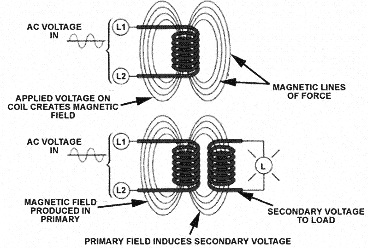The transformer is a static device that converts electrical energy from one circuit to another without changing its frequency. it raises (or decreases) the voltage and current level.
The transformer works on the principle of the mutual induction of two coils or the electromagnetic induction of Faraday’s law. When the current in the primary coil is changed, the flow related to the secondary coil also changes. This is why an EMC is induced in the secondary coil due to Faraday’s law of electromagnetic induction.

The transformer is based on two principles:
firstly, an electric current can produce a magnetic field (electromagnetism).
secondly, a changing magnetic field in a coil of wire induces a voltage at the ends of the coil. Changing the current in the primary coil changes the developed magnetic flux. The changing magnetic flux induces a voltage in the secondary coil.
In Short,
There are two coils, called the primary and secondary coils, but both are not electrically connected. The primary coil generates a changing magnetic flux due to alternating current induced in the secondary coil due to the mutual inductance EMF. The transformation is gradual or incremental depending on the number of turns in both coils. If the primary coil has a larger number of turns, it is gradually reduced, and if the secondary coil has a larger number of turns, it is gradually increased.

